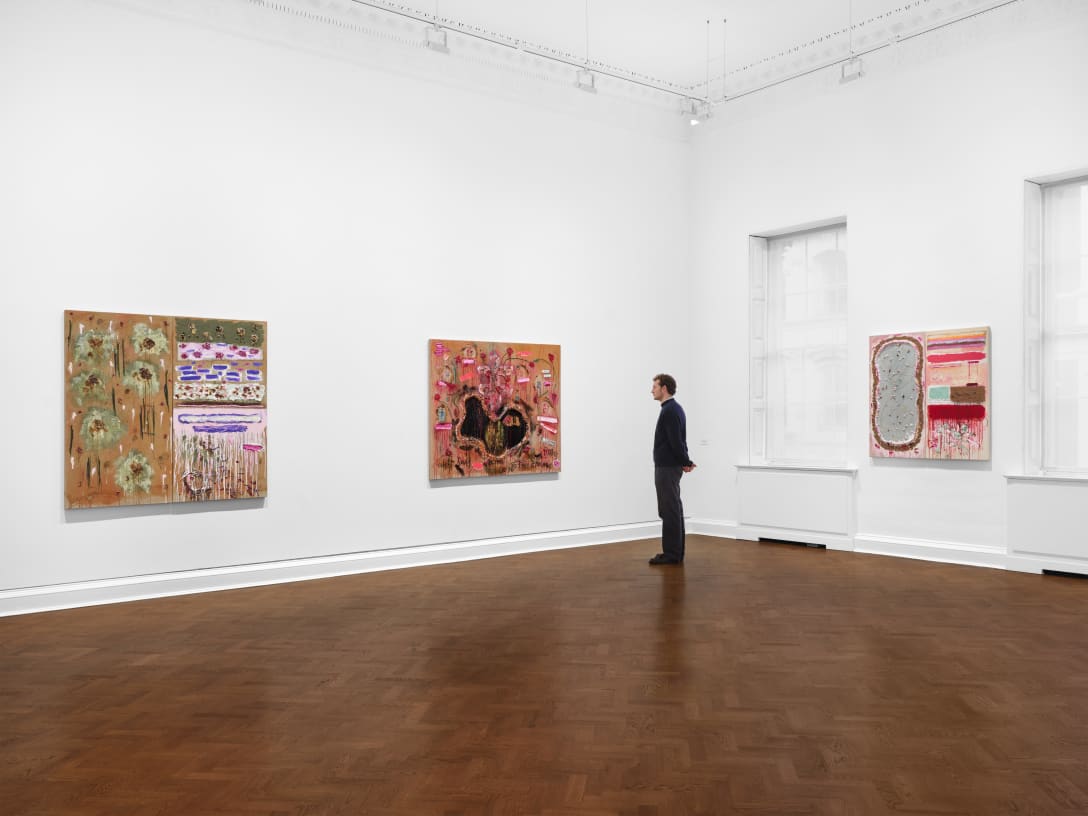Daniel Richter Half-Naked Truth
23 January – 12 March 2016
Daniel Richter's solo exhibition Half-Naked Truth featured works were divided into two groups. Created in parallel during the past two years, the works were on display for the first time in a non-institutional setting.
While the clearly defined zones of the works in the first group were reminiscent of topographic cartography, the compositions of the second suggest figurative scenes indicated male and female, archetype, fragmented bodies in various kinds of interaction. Common to the works was an expressive colourfulness with marked contrasts; thus the paintings remained in the tradition of an aesthetic principle characteristic of Richter's earlier works. Overall, however, the colours changed; they were lighter, with more pastel shades.
Daniel Richter's work pushed the boundaries of painting as a medium. In his new series, he succeeded in presenting the viewer with something completely new and distinctive, not to say idiosyncratic. Earlier series combined inspiration from a variety of styles with the discourse on iconic representations in art history. His new works moved away from, and far beyond this manner of thinking and painting. His works always had current relevance, strongly related to their present time, and often forward-looking, but these new pictures seemed to press even further forward.
They dealt with closeness and movement, an impression created not only by the arrangement of the colour fields. The colourful compositions had a lightness comparable to clouds drifting together to form shapes. The oil crayons Richter used here for the first time lend the outlines of the oil painting a subtle ambivalence, sometimes even a crude demarcation which, apparently effortlessly sketched, intensified the reciprocal effect between the individual dominant and receding parts of the pictures.
The pictures, resembling maps, clearly defined colour fields on a wide variety of grounds. There was none of the classic distinction between fore- and background, but only an indeterminate space on which the colour fields floated, organically distinct, as in a cell structure. Yet the colour fields also crowded one another, as though they were competing for space.
By breaking with his former painting method, Daniel Richter developed a new pictorial language. The result was two separate series which have nothing in common in their interpretation, but both of which emerge from the break with formal ideas: "Painting the pictures was a relatively long process, during which I was searching for a solution that interests me to problems that interest me. Then I took very simple decisions – for instance, not painting with a brush. I realised that when I'm using a brush – whether I hold it stiffly or limply, energetically or lightly – I am always driven to do what's familiar, and that's exactly what I wanted to avoid. [...] It's interesting to see how much this can be applied to various forms as a method rather than a style, and whether something new can emerge as a kind of commitment, between HOW and WHAT" (Daniel Richter, 2015).
The arrangement of the various canvases in Daniel Richter's studio was often reminiscent of experimental arrangements. His painting style developed into an experiment with diverse parameters, which was not successful until it captured the artist's attention beyond the actual result and raised new questions. At that point the paintings almost spring up, as though they had been waiting to achieve their present form. Discarding, overpainting or deletion were just as much part of the process as specifically directed and detailed completion.














































































































































































